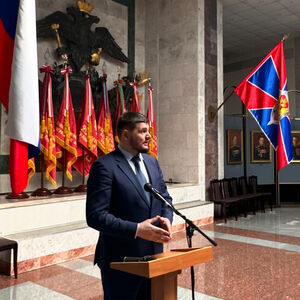Диссертация (1139771), страница 21
Текст из файла (страница 21)
- P.1– 150.153. Gupta J.K., Sinha A., Lumsden M.A. et al. Uterine arteryembolization for symptomatic uterine fibroids // Cochrane Database Syst Rev. 2014. - (12):CD005073.154. Helal A., Mashaly A., Amer T. Uterine artery occlusion for treatmentof symptomatic uterine myomas. JSLS. - 2010. - Vol.4. - P.386–390.137155. Hilário S.G., Bozzini N., Borsari R.
et al. Action of aromataseinhibitor for treatment of uterine leiomyoma in perimenopausal patients // FertilSteril. - 2009. - Vol.91(1). -P.240-243.156. Hirst A., Dutton S., Wu O. et al. A multi-centre retrospective cohortstudy comparing the efficacy, safety and cost-effectiveness of hysterectomy anduterine artery embolisation for the treatment of symptomatic uterine fibroids //Health Technol Assess. - 2008. -Vol.12(5). - P.1-248.157.
Ip P.P., Lam K.W., Cheung C.L. et al. Tranexamic acid-associatednecrosis and intralesional thrombosis of uterine leiomyomas // Am. J. Surg. Pathol.- 2007. - Vol.31(8). - P.1215-1224.158. Ishikawa H., Ishi K., Serna V.A. et al. Progesterone is essential formaintenance and growth of uterine leiomyoma // Endocrinology.- 2010. -Vol.151(6). - P. 2433-2442.159. Islam S., Protic O., Stortoni P. et al.
Complex networks of multiplefactors in the pathogenesis of uterine leiomyoma // Fertil. Steril. – 2013. – Vol.100. – P. 178–193.160. Katz T.A., Yang Q., Treviño L.S. et al. Endocrine-disruptingchemicals and uterine fibroids // Fertil Steril. - 2016. - Vol.106 (4). - P.967–997.161. Kim J.J., Sefton E.C. The role of progesterone signaling in thepathogenesis of uterine leiomyoma // Mol. Cell.
Endocrinol. – 2012. – Vol. 358 (2).– P. 223–231.162. Kim Y.J., Kim K.G., Lee S.R. et al. Preoperative 3-dimensionalMagnetic Resonance Imaging of Uterine Myoma and Endometrium BeforeMyomectomy // J. Minim. Invasive Gynecol. – 2017. – Vol. 24 (2). – P. 309-314163. Knight J., Falcone T. Tissue extraction by morcellation: a clinicaldilemma // J.
Minim. Invasive Gynecol. - 2014. - Vol.21(3). - P.319-320.164. Laughlin S.K., Herring A.H., Savitz D.A. et al. Pregnancy-relatedfibroid reduction // Fertil. Steril. - 2010. - Vol. 94. - P.2421–2423.165. Lethaby A., Vollenhoven B., Sowter M. Efficacy of pre-operativegonadotrophin hormone releasing analogues for women with uterine fibroids138undergoing hysterectomy or myomectomy // BJOG. - 2002.
- Vol.109(10). P.1097-1108.166. Lethaby A., Duckitt K., Farquhar C. Non-steroidal anti-inflammatorydrugs for heavy menstrual bleeding // Cochrane Database Syst Rev. - 2013. (1):CD000400.167. Lukes A.S., Moore K.A., Muse K.N. et al. Tranexamic acid treatmentfor heavy menstrual bleeding // Obstet Gynecol. - 2010. - Vol.116(4). - P.865-875.168. Malik M., Segars J., Catherino W.H. Integrin β1 regulates leiomyomacytoskeletal integrity and growth // Matrix Biol. - 2012. - Vol.31(7-8). - P.389–397.169.
Mehine M., Kaasinen E., Heinonen H.R. et al. Integrated data analysisreveals uterine leiomyoma subtypes with distinct driver pathways and biomarkers// PNAS. - 2016. - Vol. 113(5). - P.1315–1320.170. Mehine M., Mäkinen N., Heinonen H.R. et al. Genomics of uterineleiomyomas: insights from highthroughput sequencing // Fertil Steril. - 2014. Vol.102.
- P.621–629.171. Mehine M., Kaasinen E., Mäkinen N. et al. Characterization of uterineleiomyomas by whole-genome sequencing // N Engl J Med. - 2013. - Vol.369 (1). P.43–53.172. Metwally M., Cheong Y.C., Horne A.W. Surgical treatment offibroids for subfertility // Cochrane Database Syst Rev. - 2012. - 11:CD003857.173. Milsom I., Andersson K., Andersch B. et al. A comparison offlurbiprofen, tranexamic acid, and a levonorgestrel-releasing intrauterinecontraceptive device in the treatment of idiopathic menorrhagia // Am.
J. Obstet.Gynecol. - 1991. - Vol.164(3). - P.879-883.174. Miura S., Newaz Khan K., Kitajima M. et al. Differential infiltrationof macrophages and prostaglandin production by different uterine leiomyomas //Hum. Reprod. - 2006. - Vol.21(10). - P.545-554.139175. Moon H.S., Jeong K., Lee S.R. Robotic-assisted single incisionmyomectomy in large myoma cases // Clin. Exp. Obstet. Gynecol. – 2017.
– Vol.44 (2). – P. 283-287.176. Moravek M.B., Yin P., Ono M. et al. Ovarian steroids, stem cells anduterine leiomyoma: therapeutic implications // Hum Reprod Update. - 2015. Vol.21 (1). - P.1–12.177. Munro M.G., Storz K., Abbott J.A. et al. Practice guidelines for themanagement of hysteroscopic distending media // J. Minim Invasive Gynecol. 2013. - Vol.20(2).
- P.137-148.178. Ono M., Bulun S.E., Maruyama T. Tissue-specific stem cells in themyometrium and tumor-initiating cells in leiomyoma // Biol Reprod. - 2014. - Vol.91(6). - P.1–7.179. Paul P.G., Paul G., Radhika K.T. et al. Laparoscopic Myomectomy fora Plethora of Submucous Myomas // J. Minim. Invasive Gynecol. – 2017. – Vol.24 (6). – P. 893-894.180. Peddada S.D., Laughlin S.K., Miner K. et al. Growth of uterineleiomyomata among premenopausal black and white women // Proc.
Natl Acad SciUSA. - 2008. - Vol.105. - P.19887–19892.181. Peitsidis P., Koukoulomati A. Tranexamic acid for the management ofuterine fibroid tumors // World J Clin Cases. - 2014. - Vol.2(12). - P.893-898.182. Practice Committee of American Society for Reproductive Medicine;Society of Reproductive Surgeons. Myomas and reproductive function // FertilSteril. - 2008. - Vol.90(5 suppl). - P.125-130.183. Pritts E.A., Parker W.H., Olive D.L. Fibroids and infertility: anupdated systematic review of the evidence // Fertil. Steril.
- 2009. - Vol.91(4). P.1215-1223.184. Quinn S.D., Vedelago J., Gedroyc W. et al. Safety and five-year reintervention following magnetic resonance-guided focused ultrasound (MRgFUS)for uterine fibroids // Eur. J. Obstet Gynecol Reprod Biol. - 2014. - Vol.182. P.247-251.140185. Rabinovici J., David M., Fukunishi H. et al. MRgFUS Study Group.Pregnancy outcome after magnetic resonance-guided focused ultrasound surgery(MRgFUS) for conservative treatment of uterine fibroids // Fertil Steril. - 2010. Vol.93(1).
- P.199-209.186. Ryan G.L., Syrop C.H., Van Voorhis B.J. Role, epidemiology, andnatural history of benign uterine mass lesions // Clin. Obstet. Gynecol. - 2005. Vol.48(2). - P.312-324.187. Sabry M., Halder S.K., Allah R.E. et al. Serum vitamin D3 levelinversely correlates with uterine fibroid volume in different ethnic groups: acrosssectional observational study // Int. J.
Womens Health. - 2013. - Vol.5. P.93–100.188. Sadan O., Ginath S., Sofer D. et al. The role of tamoxifen in thetreatment of symptomatic uterine leiomyomata - a pilot study // Eur. J. ObstetGynecol Reprod Biol. - 2001. - Vol.96(2). - P.183-186.189. Sayed G.H., Zakherah M.S., El-Nashar S.A. et al. A randomizedclinical trial of a levonorgestrel-releasing intrauterine system and a low-dosecombined oral contraceptive for fibroid-related menorrhagia // Int. J. Gynaecol.Obstet.
- 2011. - Vol.112(2). - P.126-130.190. Sesti F., Cosi V., Calonzi F. et al. Randomized comparison of totallaparoscopic, laparoscopically assisted vaginal and vaginal hysterectomies formyomatous uteri // Arch. Gynecol. Obstet. - 2014.- Vol.290(3). - P.485-491.191. Simon C. Are we advancing in our scientific understanding andtherapeutic improvement of uterine fibroids or not? // Fertil. Steril. – 2014.
– Vol.102 (3). – P. 611–612.192. Singh S.S., Belland L. Contemporary management of uterine fibroids:focus on emerging medical treatments // Curr Med Res Opin. - 2016. - Vol.32(4). P.797.193. Song H., Lu D., Navaratnam K. et al. Aromatase inhibitors for uterinefibroids // Cochrane Database Syst Rev. - 2013. - Vol. 10:CD009505.141194. Stewart E.A., Gostout B., Rabinovici J. et al. Sustained relief ofleiomyoma symptoms by using focused ultrasound surgery // Obstet. Gynecol. 2007.
- Vol.110 (2 pt 1). - P.279-287.195. Stewart E.A. Uterine fibroids // N Engl. J. Med. - 2015. - Vol.372. P.1646–1655.196. Stewart E.A., Nicholson W.K., Bradley L. et al. The burden of uterinefibroids for African-American women: results of a national survey // J. WomensHealth (Larchmt). - 2013. - Vol.22(10). - P.807-816.197. Stout M.J., Odibo A.O., Graseck A.S. et al. Leiomyomas at routinesecondtrimester ultrasound examination and adverse obstetric outcomes // Obstet.Gynecol. - 2010. - Vol.116(5).
- P.1056-1063.198. Tal R., Segars J.H. The role of angiogenic factors in fibroidpathogenesis: potential implications for future therapy // Hum. Reprod. Update. 2014. - Vol.20 (2). - P.194–216.199. Taran F.A., Tempany C.M., Regan L. et al. MRgFUS Group.Magnetic resonance-guided focused ultrasound (MRgFUS) compared withabdominal hysterectomy for treatment of uterine leiomyomas // Ultrasound ObstetGynecol. - 2009. - Vol.34(5). - P.572-578.200. Thomassin-Naggara I., Dechoux S., Bonneau C. et al. How todifferentiate benign from malignant myometrial tumours using MR imaging // Eur.Radiol. - 2013.
- Vol.23(8). - P.2306-2314201. Ura B., Scrimin F., Arrigoni G. et al. Proteomic approach for theidentification of up-regulated proteins involved in the metabolic process of theleiomyoma // Int. J. Mol. Sci. - 2016. - Vol.17. - P.540–555.202. Vandermeulen L., Cornelis A., Kjaergaard Rasmussen C.
et al.Guiding Histological Assessment Of Uterine Lesions Using 3D In VitroUltrasonography And Stereotaxis // Facts Views Vis Obgyn. – 2017. – Vol. 9 (2). –P. 77-84.203. Vargas M.V., Moawad G.N., Sievers C. et al. Feasibility, Safety, andPrediction of Complications for Minimally Invasive Myomectomy in Women With142Large and Numerous Myomata // J. Minim. Invasive Gynecol. – 2017. – Vol. 24(2). – P. 315-322.204. Vilos G.A., Allaire C., Laberge P.Y. et al. The management of uterineleiomyomas // J. Obstet. Gynaecol.
















